Past Events
Interested in Cotsen events? Sign up for our mailing list.Jorge Coronado
Department of Spanish & Portuguese, Northwestern University
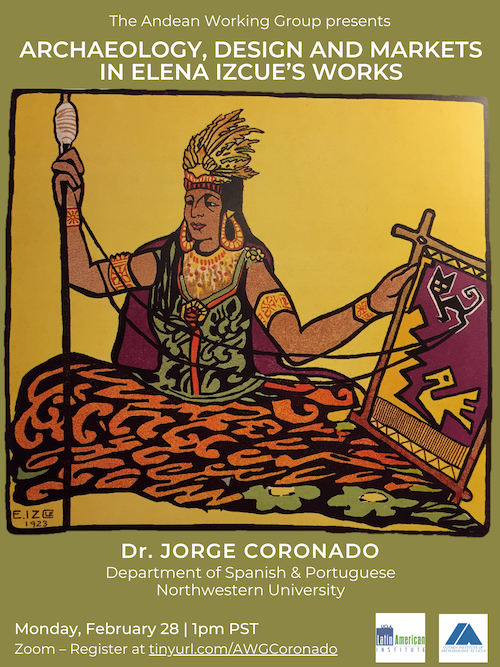
Sponsors: Cotsen Institute of Archaeology and UCLA Latin American Institute
Contact Alba Menéndez Pereda and Elyse Brusher
Email albamenendez@ucla.edu and ebrusher@ucla.edu
Phone
Malin Sahlstedt
Conservator, Vasa Museum, Swedish National Maritime and Transport Museums
Since the raising of 17th-century warship Vasa in 1961 after333 years on the seabed of Stockholm harbour,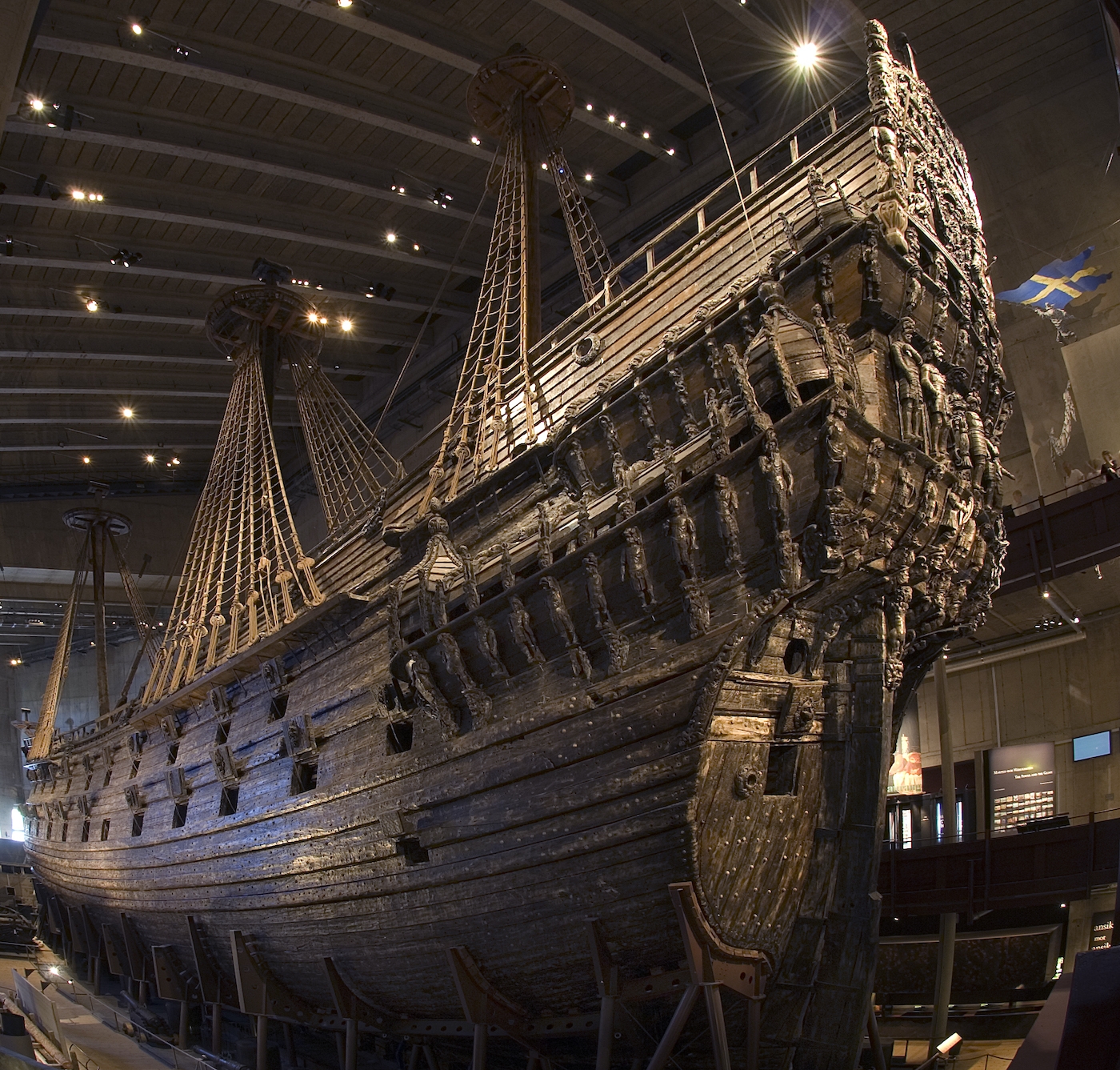 two generations of preservation staff have had the task to safeguard this mighty piece of maritime cultural heritage for the future, a task perhaps as monumental as the ship itself. Contrary to what was thought when the Vasa Museum opened in 1990, namely that the conservation project was finalised and there would be little further need for lab facilities and specialised staff, the gradual development of acidic precipitates on the surface of the ship over the coming decade signalled on-going degradation processes,which called for action and wide expertise. Through a number of interdisciplinary research projects, new knowledge has been built and implemented in museum practice. I will present some of the experiences made and lessons learned over the years, where the securing and maintaining of broad preservation competence have become increasingly important and likewise challening.
two generations of preservation staff have had the task to safeguard this mighty piece of maritime cultural heritage for the future, a task perhaps as monumental as the ship itself. Contrary to what was thought when the Vasa Museum opened in 1990, namely that the conservation project was finalised and there would be little further need for lab facilities and specialised staff, the gradual development of acidic precipitates on the surface of the ship over the coming decade signalled on-going degradation processes,which called for action and wide expertise. Through a number of interdisciplinary research projects, new knowledge has been built and implemented in museum practice. I will present some of the experiences made and lessons learned over the years, where the securing and maintaining of broad preservation competence have become increasingly important and likewise challening.
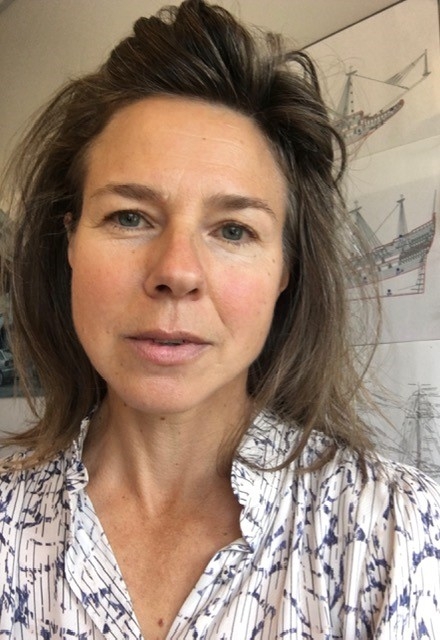 Malin Sahlstedt studied Conservation of Cultural Property at Gothenburg University and has aMSc in Archaeological Science from Stockholm University (2000). After working in archaeological conservation with the focus on the treatment of waterlogged wood and a research projecton alum-treated archaeological wood at the Swedish National Heritage Board (2002-2009),she is currently conservator at the Vasa Museum in Stockholm, Sweden (2009-present). Here, in the continuous effort to improve the long-term preservation conditions for 17th-centurywarship Vasa and associated wooden artefacts, her work is concentrated on testing methods and implementing research results in the museum context. She also worked as a conservator in the research project Saving Oseberg at the Cultural History Museum in Oslo, Norway (2017-2018), investigating the preservation status of and re-treatment options for the alum-treated wooden objects of the Viking Ship Museum collection.
Malin Sahlstedt studied Conservation of Cultural Property at Gothenburg University and has aMSc in Archaeological Science from Stockholm University (2000). After working in archaeological conservation with the focus on the treatment of waterlogged wood and a research projecton alum-treated archaeological wood at the Swedish National Heritage Board (2002-2009),she is currently conservator at the Vasa Museum in Stockholm, Sweden (2009-present). Here, in the continuous effort to improve the long-term preservation conditions for 17th-centurywarship Vasa and associated wooden artefacts, her work is concentrated on testing methods and implementing research results in the museum context. She also worked as a conservator in the research project Saving Oseberg at the Cultural History Museum in Oslo, Norway (2017-2018), investigating the preservation status of and re-treatment options for the alum-treated wooden objects of the Viking Ship Museum collection.
Contact Céline Wachsmuth
Email wachsmuthc@g.ucla.edu
Phone
Contact
Phone
Willeke Wendrich, MODERATOR
Director, Cotsen Institute of Archaeology & Professor, Department of Near Eastern Languages and Cultures, University of California Los Angeles
Angela McArdle
Senior Historic Preservation Specialist, Department of Veterans Affairs
Albert Gonzalez
Associate Professor of Anthropology & Director of the C.E. Smith Museum of Anthropology, California State University, East Bay
Kristina Douglass
Assistant Professor of Anthropology, Penn State University
Stephen Acabado
Associate Professor of Anthropology & Director, UCLA Center for Southeast Asian Studies
Sarah Herr
President, Desert Archaeology Inc.
Julie Stein
Executive Director of the Burke Museum & Professor of Anthropology, University of Washington
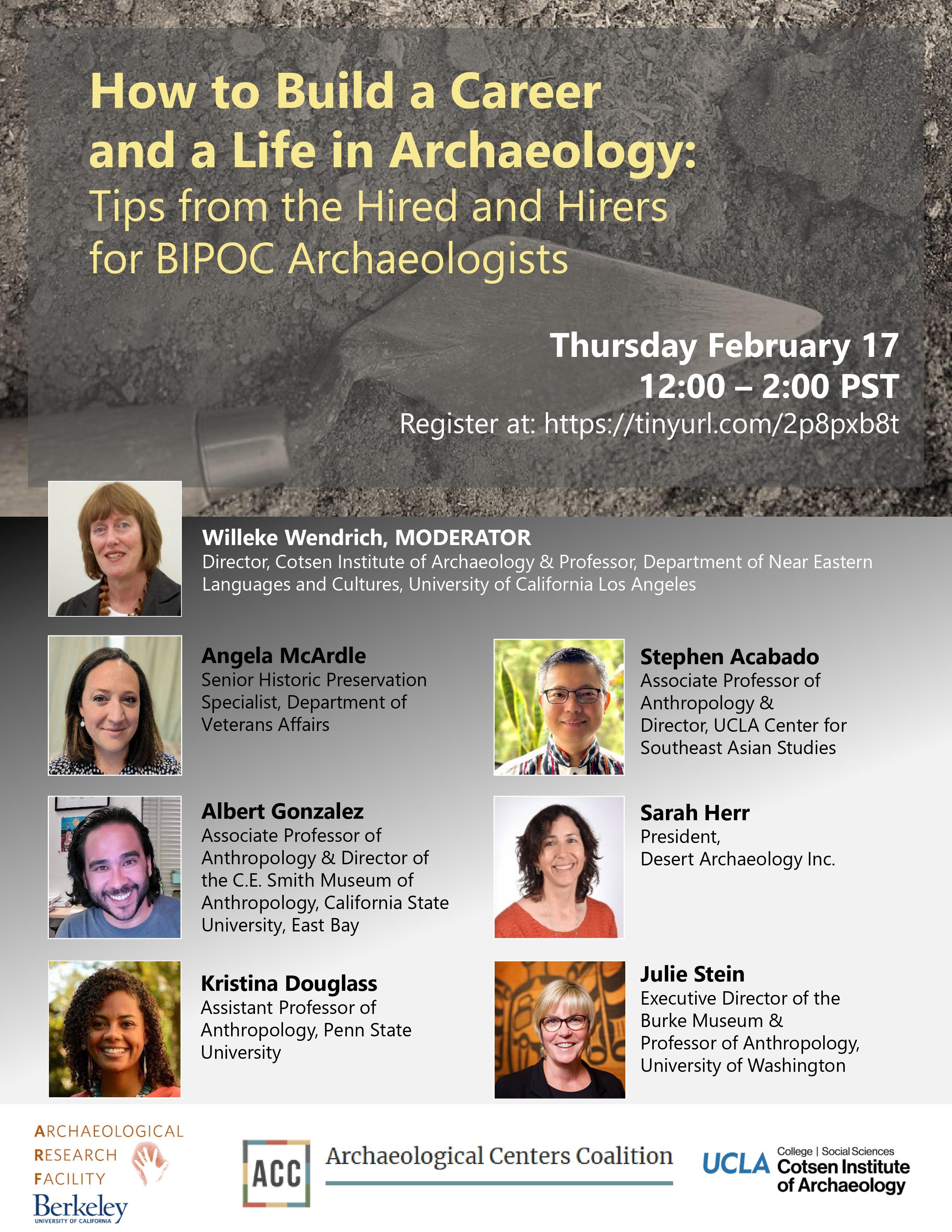
Contact
Phone
A book release seminar sponsored by STRI, Panama and the Panamanian ministry of culture. This new book, written in Spanish, presents recent archaeological research in Panama. The book is the first tome devoted to Panamanian archaeology published in Spanish in Panama.
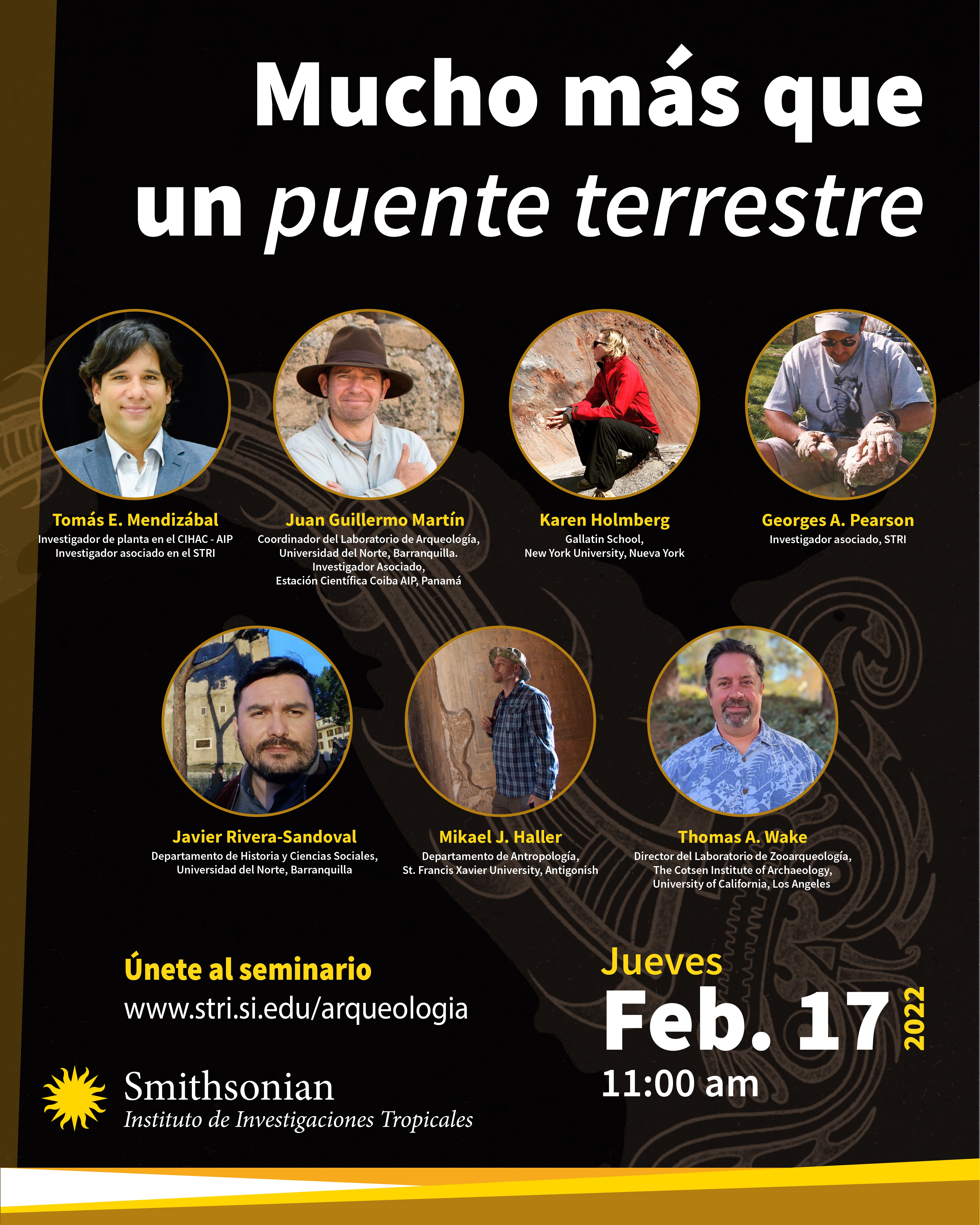
Contact Tom Wake
Phone
Dr. Justin Dunnavant, Assistant Professor, UCLA Department of Anthropology
Darartu Mulugeta, Undergraduate, UCLA
As increasing calls for science communication encourage archaeologists to convey their research to diverse public audiences, we found it necessary to explore how such research was disseminated in the past. Delving into the archives of Ebony Magazine and the Johnson Publishing Company, we examine the manner in which archaeological research was communicated in the Black popular press from the 1950s into the present. The articles, authors, and subjects provide unique insight into the topics of interest to Black America and speak to the power of the Black press at educating and exciting the public about ground-breaking archaeological research. Engaging Ebony Magazine as a historical archive, we uncover little-known figures and moments in the history of African and African diaspora archaeology and offer suggestions for future directions in science communication research.
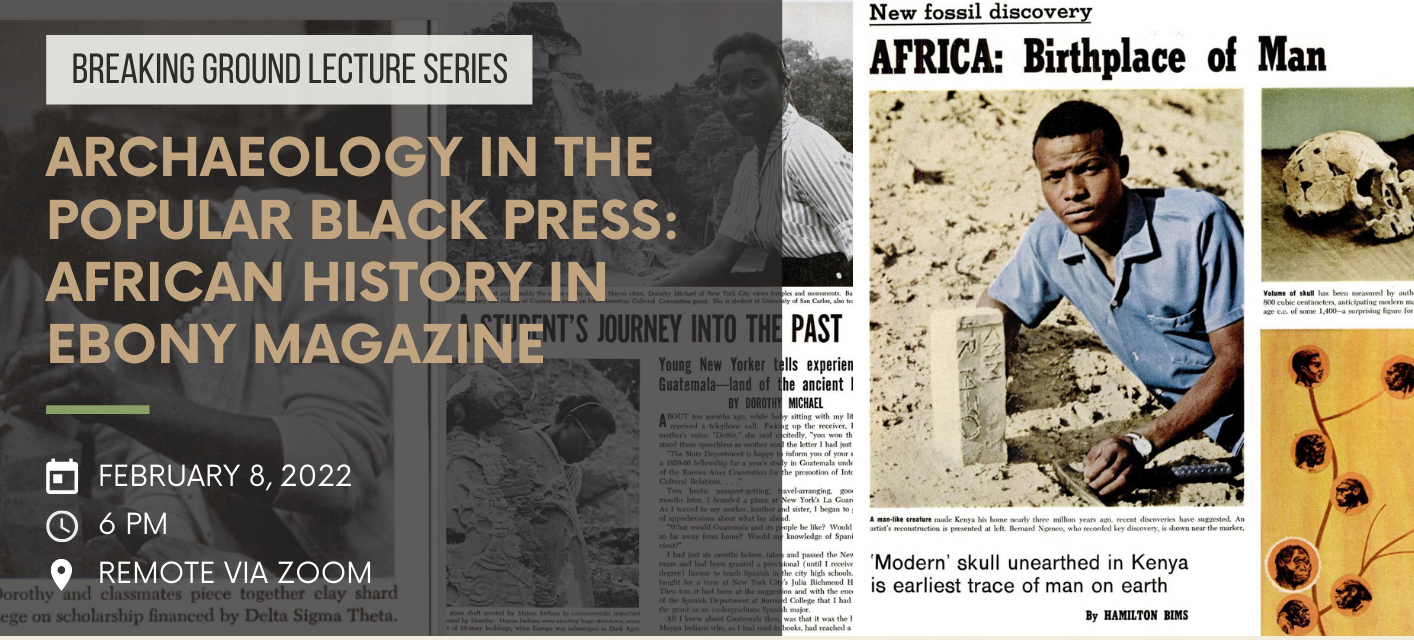
Dr. Justin Dunnavant
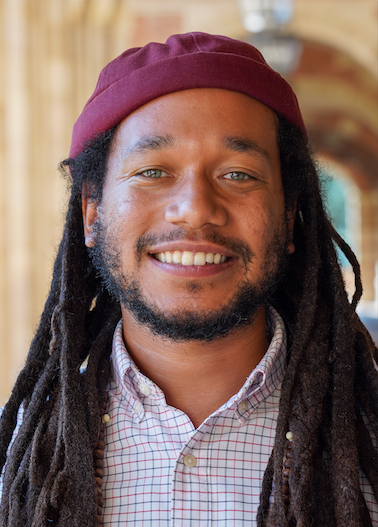 Dr. Justin Dunnavant is an Assistant Professor in the Department of Anthropology at UCLA. His current research in the US Virgin Islands investigates the relationship between ecology and enslavement in the former Danish West Indies. In addition to his archaeological research, Justin is co-founder of the Society of Black Archaeologists and an AAUS Scientific SCUBA Diver. In 2021, he was named a National Geographic Emerging Explorer and inducted into The Explorers Club as one of “Fifty People Changing the World that You Need to Know About.” He is also a member of the Board of Trustees of the National Marine Sanctuary Foundation. His research has been featured on Netflix's "Explained," Hulu's "Your Attention Please" and in print in American Archaeology and Science Magazine.
Dr. Justin Dunnavant is an Assistant Professor in the Department of Anthropology at UCLA. His current research in the US Virgin Islands investigates the relationship between ecology and enslavement in the former Danish West Indies. In addition to his archaeological research, Justin is co-founder of the Society of Black Archaeologists and an AAUS Scientific SCUBA Diver. In 2021, he was named a National Geographic Emerging Explorer and inducted into The Explorers Club as one of “Fifty People Changing the World that You Need to Know About.” He is also a member of the Board of Trustees of the National Marine Sanctuary Foundation. His research has been featured on Netflix's "Explained," Hulu's "Your Attention Please" and in print in American Archaeology and Science Magazine.
Darartu Mulugeta
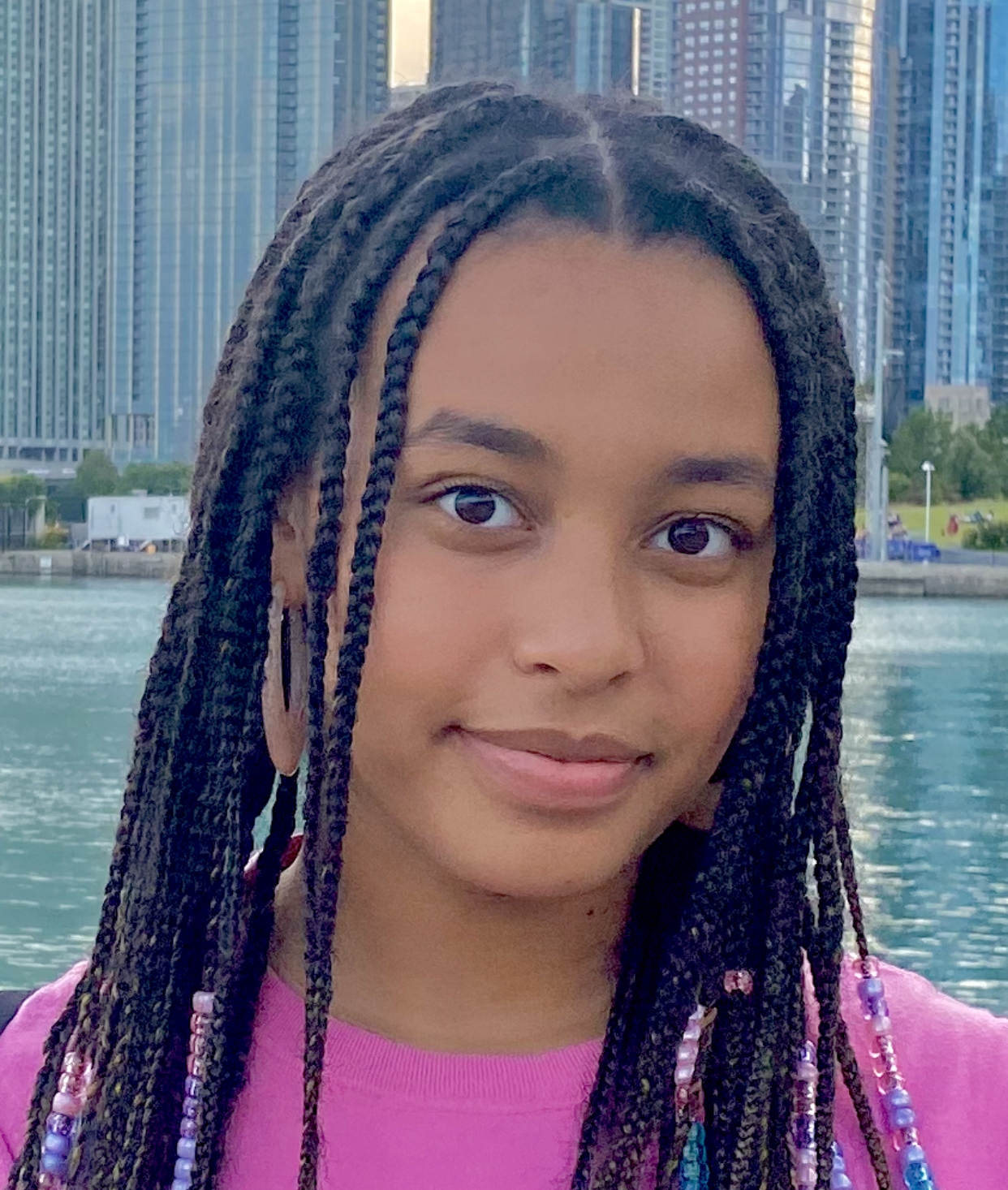 Darartu Mulugeta is a Political Science and Psychology student at the University of California, Los Angeles. She is specializing in methods and computing with the primary goal of studying African communities and history. She is currently part of the African Diaspora Archaeology Lab as a Bunche Research Fellow. Outside of school, she volunteers at the Oromo Legacy Leadership and Advocacy Association as an Oromo language teaching assistant.
Darartu Mulugeta is a Political Science and Psychology student at the University of California, Los Angeles. She is specializing in methods and computing with the primary goal of studying African communities and history. She is currently part of the African Diaspora Archaeology Lab as a Bunche Research Fellow. Outside of school, she volunteers at the Oromo Legacy Leadership and Advocacy Association as an Oromo language teaching assistant.
Contact Michelle Jacobson
Email mjacobson@ioa.ucla.edu
Phone
 The UCLA Graduate Student Association of Archaeology, an affiliate of the Cotsen Institute of Archaeology, invites you to attend our 9th UCLA Graduate Archaeology Research Conference. This two day virtual event will take place February 4th (4-5pm PST), and February 5th (9am-4pm PST) 2022.
The UCLA Graduate Student Association of Archaeology, an affiliate of the Cotsen Institute of Archaeology, invites you to attend our 9th UCLA Graduate Archaeology Research Conference. This two day virtual event will take place February 4th (4-5pm PST), and February 5th (9am-4pm PST) 2022.
Titled “ReVisioning the Future of Archaeology,” we ask: who is archaeology for, and what tools will we use to (re)design its future? The keynote speaker and graduate presenters will explore topics that consider various questions about archaeology’s role in the present. Topics that bring new ideas, new resources, and new approaches together into an interdisciplinary dialogue.
“ReVisioning the Future of Archaeology” seeks to engage with the greater community, and take into consideration artistic visions, collective and community memory, and diverse points of view in order to produce more inclusive practices and an equitable discipline.
On the first day, Friday February 4, we will have our keynote speaker, Dr. Uzma Rizvi speak. On Saturday, we will hear from our graduate student presenters., who will present for 20 minutes each, followed by a Q&A and discussion.
View the conference website here.
Schedule of Events
Friday, February 4th: 4-5pm PST
Keynote address, "The Future Was ___________: A time outside this time" by Dr. Uzma Z. Rizvi, Associate Professor of Anthropology and Urban Studies at Pratt Institute, Brooklyn, NY; and Visiting Faculty in the Department of Archaeology, Shah Abdul Latif University, Khairpur, Pakistan
With nearly two decades of work on decolonizing methodologies, intersectional and feminist strategies, and transdisciplinary approaches, Rizvi's work has intentionally pushed disciplinary limits, and demanded ethical decolonial praxis at all levels of engagement, from teaching to research.
Saturday, February 5th: 9am-4pm PST
9:00am -10:45am, Session 1: "Multivocal Perspectives on Heritage and Belonging"
11:00am -12:45pm Session 2: "Technological Futures in Archaeology"
2:00-3:45 pm Session 3: "Performing Archaeology: Re-Engaging with Materials and Their Stories"
Register for the conference here.
Contact Taylor Carr-Howard
Email tcarrhoward@g.ucla.edu
Phone
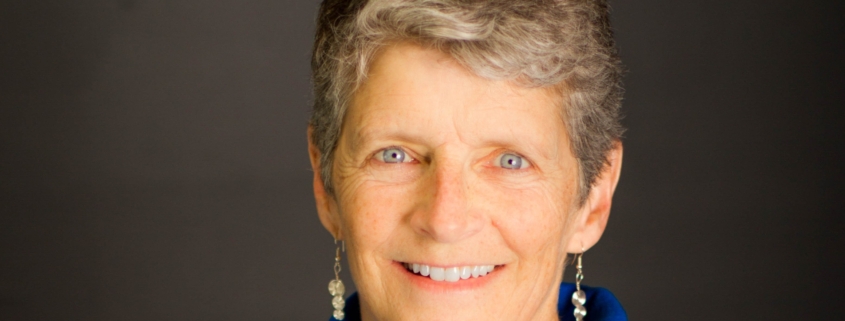
Speaker: Sarah Sutton
Date: February 4, 2022. 11:00am
Title: Cultural Heritage and Climate Change: D(d)iplomacy for Neighbors and Nations
Cultural heritage has been undervalued as a community and national resource in addressing climate change. Historic landscapes are critical waterline buffers and biodiversity habitats. Structures are refuges and examples of resilient construction. Human-made objects and art hold our identities and the collective knowledge we depend upon for well-being. And our traditions have lessons for sustainability and resilience. These are valuable resources for neighbor-to-neighbor and nation-to-nation relationships that underlay the cooperative action necessary for creating a world where everyone and everything may some day thrive.
Presenter Sarah Sutton will share how those who care about cultural heritage have been taking important steps to protect it and to embed it in climate change response as a core component, not an add on. Historic structures and retrofitted modern buildings are increasingly efficient, low-carbon solutions that double as safe spaces for community resilience planning in stable times, and refuges in disturbed times – if left standing. The Mississippi River Cities and Towns Initiative is a coalition protecting astonishing amounts of land as habitat and a buffer against riverine flooding. The Intergovernmental Panel on Climate Change (IPCC) will now include cultural heritage in its reports to the UN. And when President Biden rejoined the Paris Agreement, he named cultural institutions as valuable partners in tackling climate change. Across the US and now as part of United Nations-level discussions, cultural heritage is critical to domestic and national practices and agreements that create shared solutions.
Bio:
Sarah Sutton is CEO of Environment & Culture Partners (ECP), a non-profit accelerating cultural institutions’ leadership in climate action. ECP manages the Frankenthaler Climate Initiative, a grant program supporting museums’ energy efficiency and clean energy projects, and an IMLS National Leadership Grant creating energy efficiency tools for museums. Sutton is the Cultural Sector Lead for America is All In supporting the Paris Agreement. She is co-author of The Green Museum and author of Environmental Sustainability at Historic Sites & Museums.
Sutton is a Steering Committee member and Climate Change co-chair, for Held in Trust, a special program of the National Endowment for the Humanities and the American Institute for Conservation that is shaping the future of the preventive conservation profession. Sutton is a member of the American Psychological Association’s Climate Change Task Force, and was a selected participant in the International Co-Sponsored Meeting on Climate Change with the IPCC, UNESCO, and International Council on Monuments and Sites (ICOMOS).
Please submit your questions in advance of the webinar via email to:
hnadworny@support.ucla.edu by Wednesday, February 2 at 12:00 p.m.
Contact
Email hnadworny@support.ucla.edu
Phone
Miguel Guzmán Juárez
Department of Architecture and Urbanism, Universidad Ricardo de Palma
Registration Link: http://tinyurl.com/AndArchTalkMG
Note: This talk will be delivered in Spanish.
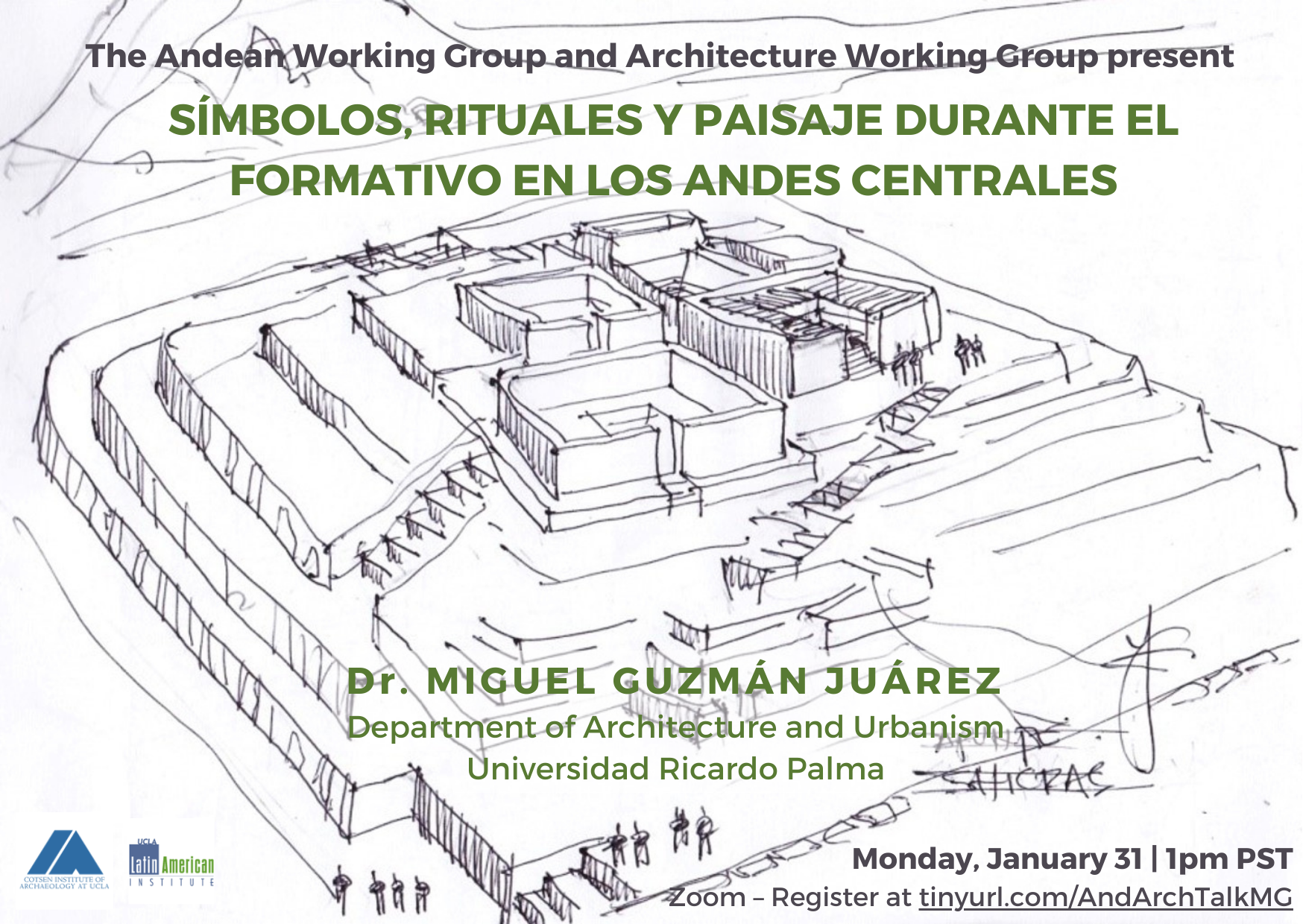
Sponsors: Cotsen Institute of Archaeology and UCLA Latin American Institute
Contact Rachel Schloss & Syon Vasquez
Email rachelschloss@g.ucla.edu & syon@g.ucla.edu
Phone
Leo Garofalo
Department of History, Connecticut College
A discussion of how to study the social history of ethnic groups viewed as marginal in the colonial Andean cities of the 16th and 17th centuries. Studies cases of: indigenous migrants to cities like Lima and Cuzco, including those from Central America and Chile; African and African descendants, including Afro-Iberians, in both cities and present in rural areas production; and people arriving to Peru from in early trans-Pacific diaspora. These constitute three challenging cases for historical study, requiring extra work to detect their traces in the archives and other period sources.
Registration Link: https://tinyurl.com/AWGTalk
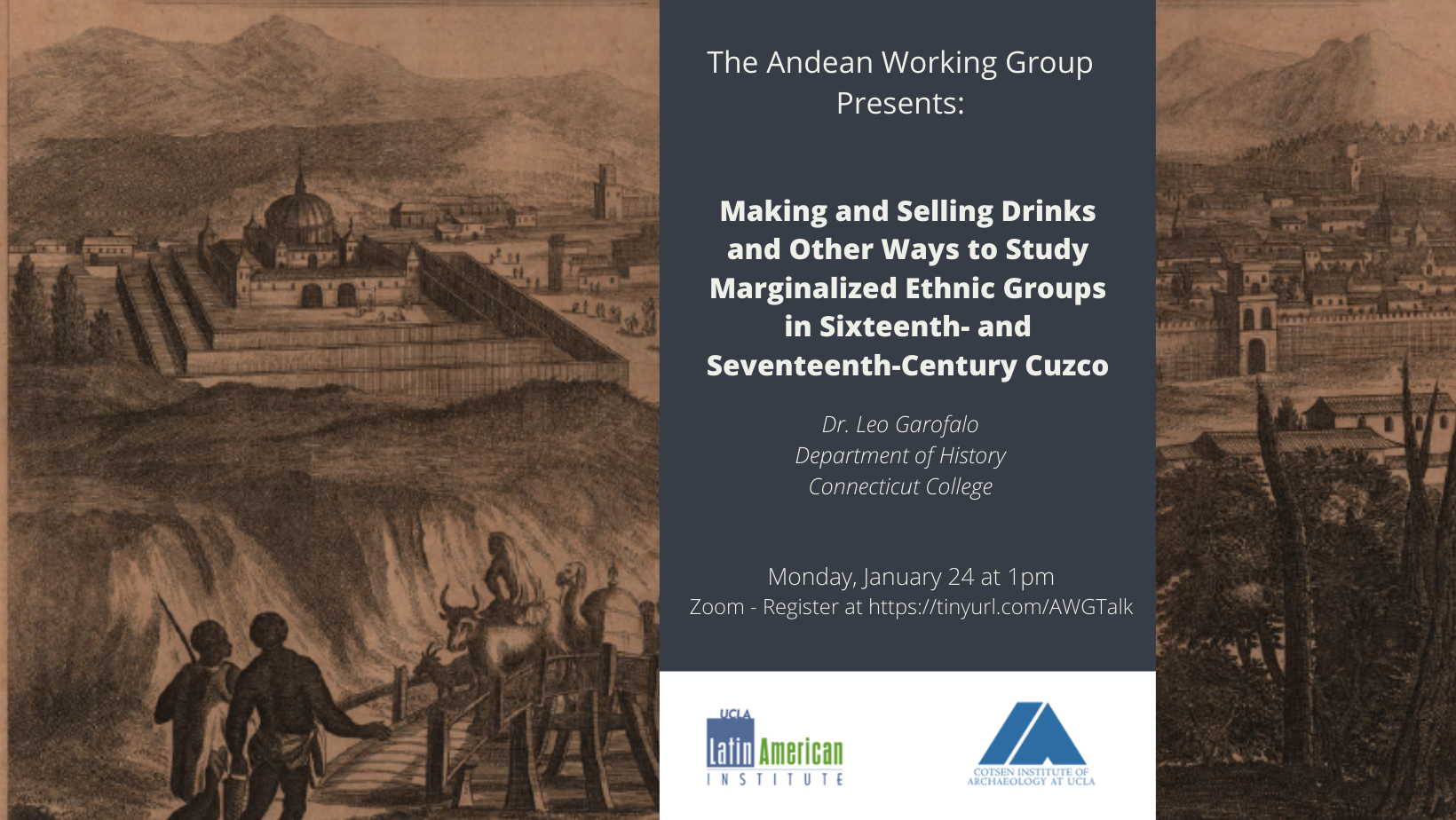
Contact Alba Menéndez Pereda & Elyse Brusher
Email albamenendez@ucla.edu & ebrusher@ucla.edu
Phone
- ‹ previous
- 14 of 50
- next ›
